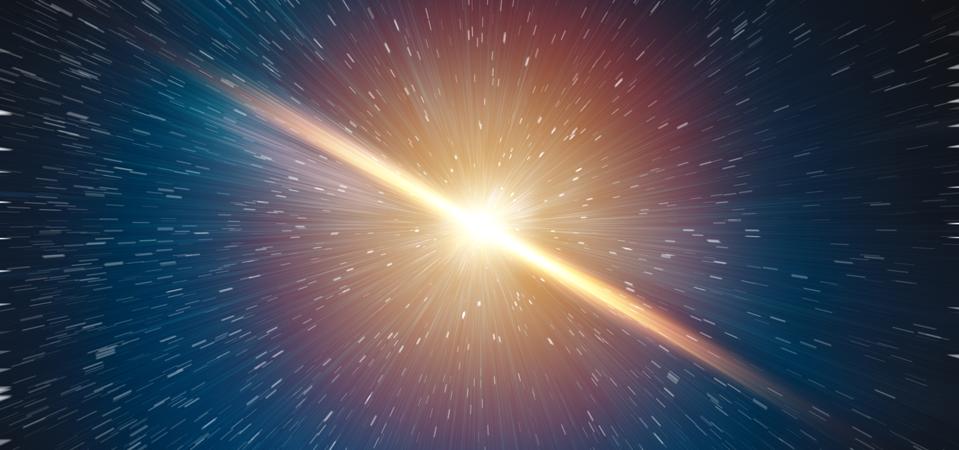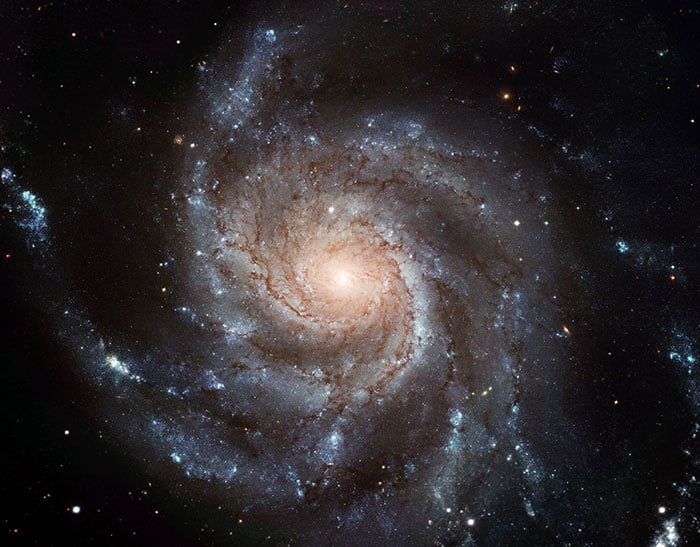'The Universe is under no obligation to make sense to you.'
-Neil deGrasse Tyson
Keeping these reassuring words in mind, let us embark on the most significant scientific journey, to look for answers to the most fundamental questions
•What is The Universe?
For us, the universe is all there is. There is nothing beyond and our mind does go there but thinking about what lies outside is like asking yourself how can I score more than 100% in the upcoming test. It is just not defined that way.
•How did the universe begin?
What happened at time, t=0, the moment when everything is supposed to have started, is still a mystery and what happened before that is even less known. However, we have made significant progress as far as knowing about our origins is concerned and have informed and sound knowledge about the universe's state from when it was quite young, about 10^(-13) seconds. This feat is not trivial.
To be able to look back to those moments is truly magnificent and amazes me every time I wonder.
Although years of experiments and ideas put forward by the greatest of scientific minds have combinedly helped us to attain the current understanding of our universe, but there are two main factors which have helped us look into the past and actually realise the conditions prevalent at that time are; one is the Cosmic Microwave Background Radiation (CMB) which is the radiation from the time when the universe was about 3,80,000 years old. It was detected accidentally when and provides an image of the early universe (3,80,000 years old).
The second is the fact that even though we cannot see beyond this period of 3,80,000, we are able to recreate the conditions present in the early universe even before this age with the use of Relativistic Heavy Ion Collider. Here particles move at speeds close to the speed of light and collide into each other . This causes extremely high temperatures to build up and takes us back to time when the Universe was just 10^(-13) seconds old
•The Big Bang Theory:

Something we are all familiar with, the big bang theory is the most widely accepted model for the evolution of the Universe. It explains evolution in different stages, starting from a very small, confined region, extremely hot and dense to the present day universe having billions of trillions times the diameter.
One thing which is important to note before we move on to the different stages of development is, the Big Bang Theory explains the evolution of the Observable universe, not the entire universe as the size of the entire universe in the beginning, could have been anything between five thousand times the size of the Observable Universe to infinity.
The idea that the universe was once smaller came about when Edward Hubble, in the 1920s, showed that other galaxies were moving away from ours, the Milky Way, and that the further away they were, the faster they seemed to be moving. This meant that the universe was expanding, and thus the conclusion that the observable universe, once, was smaller was made and this idea was extrapolated to the earliest periods of our cosmic evolution.
What we need to appreciate is that this entire knowledge of the history of our universe, which we are discussing as a single topic, did not unfold at once. Contributions from various scientists and numerous such discoveries together have led us to the understanding we have at this point about nature, the universe, it's timeline and its constituents.
•Timeline of the evolution of Universe:
The growth of our universe occurred in stages, described as following:
•The Planck epoch: This is the time period before t=10^-43 seconds. All the
information about this time is speculation and ideas as prior to the age of 10^-43 seconds, the energies and temperature were so extreme that the Laws of Physics break down and we cannot say anything with certainty. It is thought that during this period, at such high energies, the four fundamental forces,
The strong nuclear interactions
The weak nuclear interactions
Gravitational force
Electromagnetic forces
Were united to form a combined force called the superforce. At the end of this epoch, the gravitational force separated from the rest and thus the next stage began,
•The Grand unification epoch: This refers to the time period between 10^-43 to 10^-36 seconds after the beginning of the expansion.
Before t=10^-36, the universe was expanding, but at a slower rate. At time t=10^-36, the strong nuclear force is thought to have separated from the rest and it is proposed that this provided the cause for the next stage of expansion, the inflationary period.
•Inflationary epoch: It is the rapid exponential expansion of space at speed greater than the speed of light. The universe grew in size and almost instantaneously (the inflationary period ended at about t=10^-32 seconds) became the size of an orange from being about the size of a grape.
•Electroweak epoch: This is the next stage where the last two forces parted ways and the four forces became what we know them to be today.
During the above mentioned periods, Energy was the only thing present in our universe but this di From Einstein's famous equation, E=mc^2,
We know that mass and energy are inter convertible and this applies when we talk about how matter came about to be as at some point, the first matter particles have to have been formed in the history of our universe. But there was a problem,
mass was formed in the form of matter and antimatter, and as soon as they were created, they annihilated each other releasing energy. If this had been the case, no matter would be formed and the universe would be composed of nothing but energy.
Thankfully for us, this was not the case and a phenomenon called as baryogenesis (creation of a non zero baryon number, or, an asymmetry between matter and antimatter) occurred in which for every billion antimatter particles formed one billion and one matter particles were created and this minute difference accounts for all the matter which we see around us.
However, this formation from everything from basic subatomic particles did not occur without hindrance. Initially, the conditions were extremely hot and energies were so high that the subatomic particles present were not able to bind together and form the building blocks of life, atoms. As time progressed and expansion continued, the universe cooled down and temperatures became low enough for the quarks to bind and form protons and neutrons which combined to form the first nuclei, helium and hydrogen. Later the electrons too were bound by the protons and thus the first elements were made.
The story still does not get easy for our early Universe as it is yet to achieve its full glory. The first elements have been made, but the next step, the formation of heavier elements, which is necessary for life to begin, could only occur by the fusion of those present, Hydrogen and Helium.
And this fusion would not have been achieved had the universe in its early days, not developed some imperfections, or cracks. When we observe the CMB radiation, it reveals that the early universe was not uniformly dense everywhere and there were cracks of high density separated by gaps of space. The cracks were gas clouds of hydrogen and helium bound by gravity.
These clouds later collapsed and this led to the fusion of the first elements and the formation of stars and galaxies.
This was a very important step in this vast timeline and thus, the next stage is named the stellar epoch.
•The Stellar Epoch:

This is the period when the first stars were born and though we only look at them as the givers of light, it was inside the stars where the fusion of lighter elements took place to form heavier elements, up til iron, and where the rest of the elements, heavier than iron, too were formed due to supernova explosions. Thus, we owe our existence to the stars!
This is the period the universe is currently going through. With new galaxies and stars being formed and life emerging!
That is a question for another day, whether in this billions of kilometres wide universe with billions of galaxies and habitable planets we are the only intelligent life forms present.
Stay curious and fun fact, although all of us know that the earth is not flat, right!, It is interesting to note that on the basis of our current tools and the information gathered from them, we have not detected any curvature as of now and the shape of the universe is thought to be flat!
Comments
Post a Comment